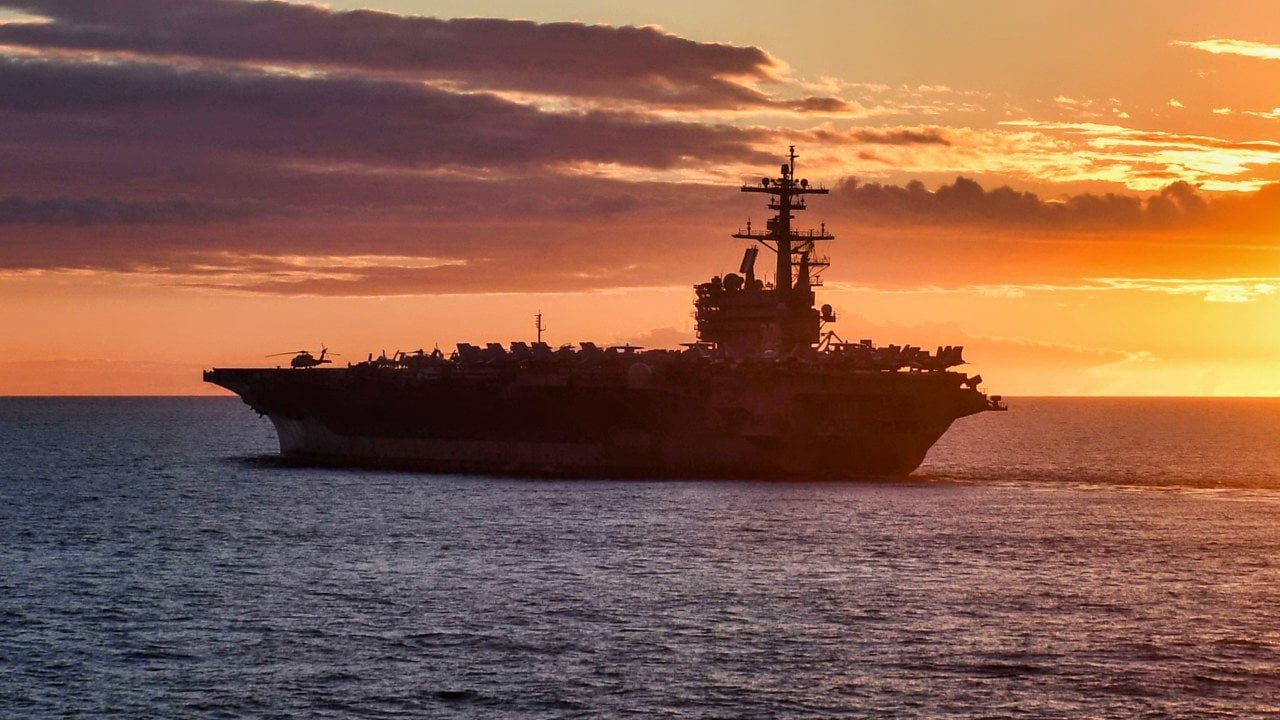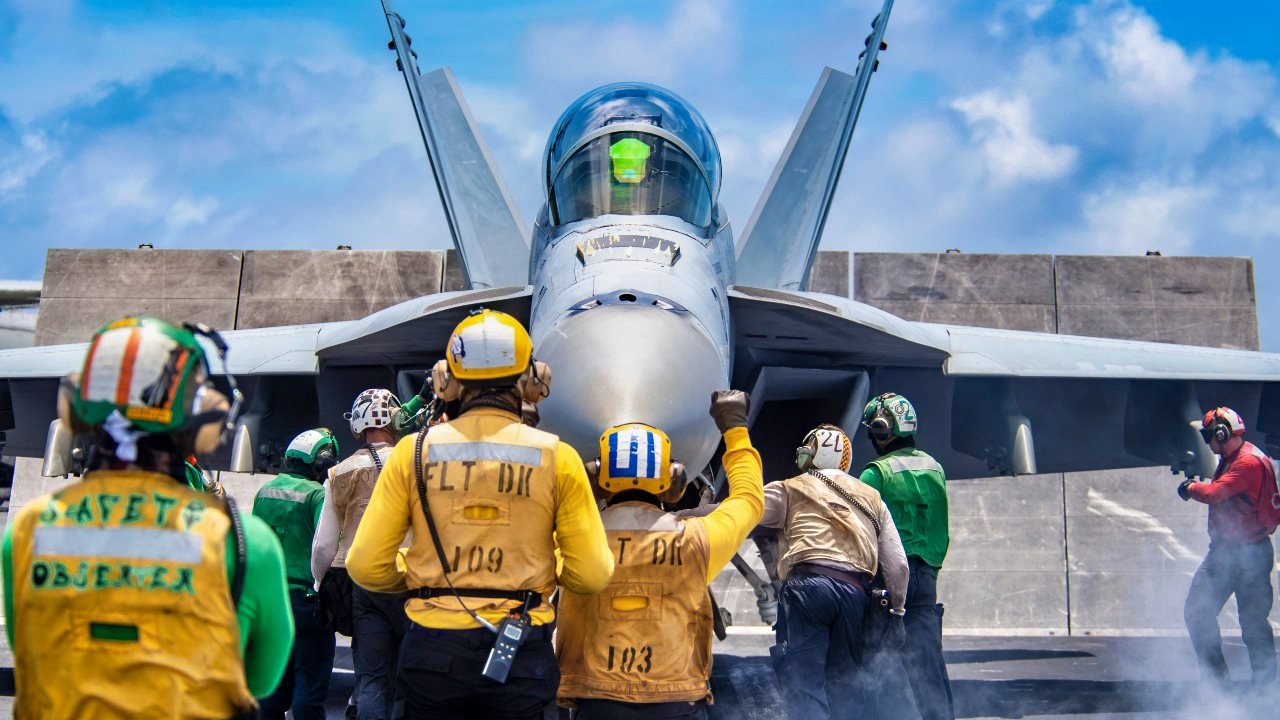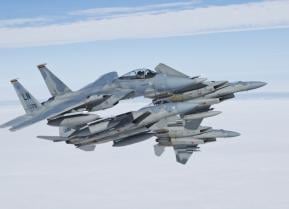China's Is Totally Obsessed with Sinking U.S. Navy Aircraft Carriers
China's development of anti-ship ballistic missiles (ASBMs) like the DF-21D and DF-26B highlights its strategy to counter the U.S. Navy's aircraft carriers
Summary and Key Points: China's development of anti-ship ballistic missiles (ASBMs) like the DF-21D and DF-26B highlights its strategy to counter the U.S. Navy's aircraft carriers.

-Drawing lessons from past Taiwan Strait crises, Beijing has prioritized building capabilities to deny U.S. naval access and project power in the Indo-Pacific region.
-These missile systems, designed to target and destroy carriers, reflect China's focus on deterring U.S. intervention in potential conflicts over Taiwan and asserting control over disputed waters.
China's Carrier Killers: A Game-Changer in the Pacific
While the People's Liberation Army Navy (PLAN) launched its third carrier recently, the Type 003 Fujian, its leadership knows it can't go carrier-to-carrier against the U.S. Navy. And that explains why Beijing has several types of missiles built to attack and destroy America's aircraft carriers. In fact, history tells us Beijing has a keen interest in developing this capability.
Lessons From History on Aircraft Carriers
In 1954-55, and again in 1958, the tensions between the People's Republic of China (PRC) and Taiwan – officially the Republic of China (ROC) – even resulted in armed conflict. It wasn't a full-blown war, but it was still a serious matter that involved the PRC bombing islands controlled by the ROC.

The situation nearly reached a boiling point again in 1996, during the so-called "Third Taiwan Strait Crisis," which began with a seemingly insignificant moment nearly a year earlier. In May 1995, then President Bill Clinton granted Lee Teng-hui, the then president of the Republic of China (Taiwan), a visa to visit the United States so that the ROC official could attend a reunion at Cornell University.
Beijing didn't take the matter lightly, and the situation simmered until the PLA carried out military exercises in March 1996 that included the live fire of missiles, allegedly intended to intimidate the Taiwanese electorate in the run-up to that year's presidential election.
U.S. Response Remembered
On March 10, 1996, the White House ordered two aircraft carriers to the region: the Forrestal-class USS Independence (CV-62) proceeded from Japan to Taiwan-adjacent waters; while the USS Nimitz (CVN-68) departed the Persian Gulf and sailed for the Philippine Sea. The two flattops were also joined by the Belleau Wood SAG (Surface Air Group), which included the Tawara-class amphibious assault ship USS Belleau Wood (LHA-3) and the 31st Marine Expeditionary Unit.
It would be fair to describe the deployment as a late 20th-century version of "gunboat diplomacy" – however, it was one that involved carriers and amphibious assault ships.
While China conducted a fourth and final missile test on March 13 and a joint ground, air, and naval exercise a few days later, tensions soon cooled. As has been noted in the years since Beijing may not have been happy with Washington's exercise of gunboat diplomacy, but it couldn't really do much. The PRC's symbolic gesture – its joint military exercises – was matched with an equal symbolic gesture, the arrival of the U.S. Navy.
Carrier Killers?
It has been more than many years since the Third Taiwan Strait Crisis, and by some accounts, for the past three years (at least) we've been witnessing a de facto Fourth Taiwan Strait Crisis. The difference this time is that Beijing has ensured it has the weapons to counter the U.S. Navy's aircraft carriers.
This includes its DF-21D and DF-26B anti-ship ballistic missiles, and it was just a few years ago, in late summer 2020, that China conducted test launches of both platforms into the South China Sea. Those tests came just one day after Beijing accused the United States of sending a U-2 spy plane into a "no-fly zone" during a PLAN live-fire naval drill in the Bohai Sea off China's north coast.
China first unveiled its road-mobile, two-stage solid-fueled intermediate-range ballistic (IRBM) DF-26B (Dong Feng-26) during a military parade in September 2015. It has a reported range of 4,000km (2,485 miles) and it can be used in both conventional and nuclear strikes against ground as well as naval targets.
The mobile launcher can carry a 1,200 to 1,800 kg nuclear or conventional warhead; and as it could directly strike a target such as the U.S. territory of Guam, in the event of war it should be seen as a formidable weapon. Even more ominously, the DF-26B has been described as a "carrier killer" due to how it could be used to target the U.S. Navy's fleet of Nimitz– and Ford-class nuclear-powered supercarriers.
What is also noteworthy about the DF-26B is that it is a dual-capable missile with intermediate range. Ground-fired intermediate-range missiles are banned by the Intermediate-range Nuclear Forces Treaty signed by the United States and the Soviet Union at the end of the Cold War. As China was never invited to join the agreement, and apparently would never abide by it, the United States withdrew from the treaty during the Trump administration citing Beijing's deployment of such weapons as a justification.
The other missile that is currently in Beijing's arsenal has been seen as just as worrisome. It is the DF-21D, which has been described as the world's first anti-ship ballistic missile (ASBM) or "carrier killer." The DF-21D first entered service more than 30 years ago in a ground attack format and replaced the obsolete Dong Feng-2 (CSS-1) and has been massively upgraded throughout the 2000s and into the 2010s. It became China's first solid-fuel road-mobile missile. The missiles have a range of at least 1,000 miles according to most experts.

That could make it instrumental in striking a vessel in the open ocean or denying access to a potential opponent in transiting to a conflict zone in waters that Beijing seeks to control, such as the East or South China Seas.
The DF-21D had entered service in the early 1990s, yet it was not ready to serve as a carrier-killer missile in any sense.
Clearly, however, the world avoided a full-blown conflict over what was really a minor row, but Beijing may not be so willing to back down to the next display of gunboat diplomacy now that it has an arsenal of weapons that could remove those pieces from the board.
About the Author: Peter Suciu
Peter Suciu is a Michigan-based writer who has contributed to more than four dozen magazines, newspapers and websites. He regularly writes about military hardware, firearms history, cybersecurity and international affairs. Peter is also a Contributing Writer for Forbes. You can follow him on Twitter: @PeterSuciu.
All images are Creative Commons and/or Shutterstock.


